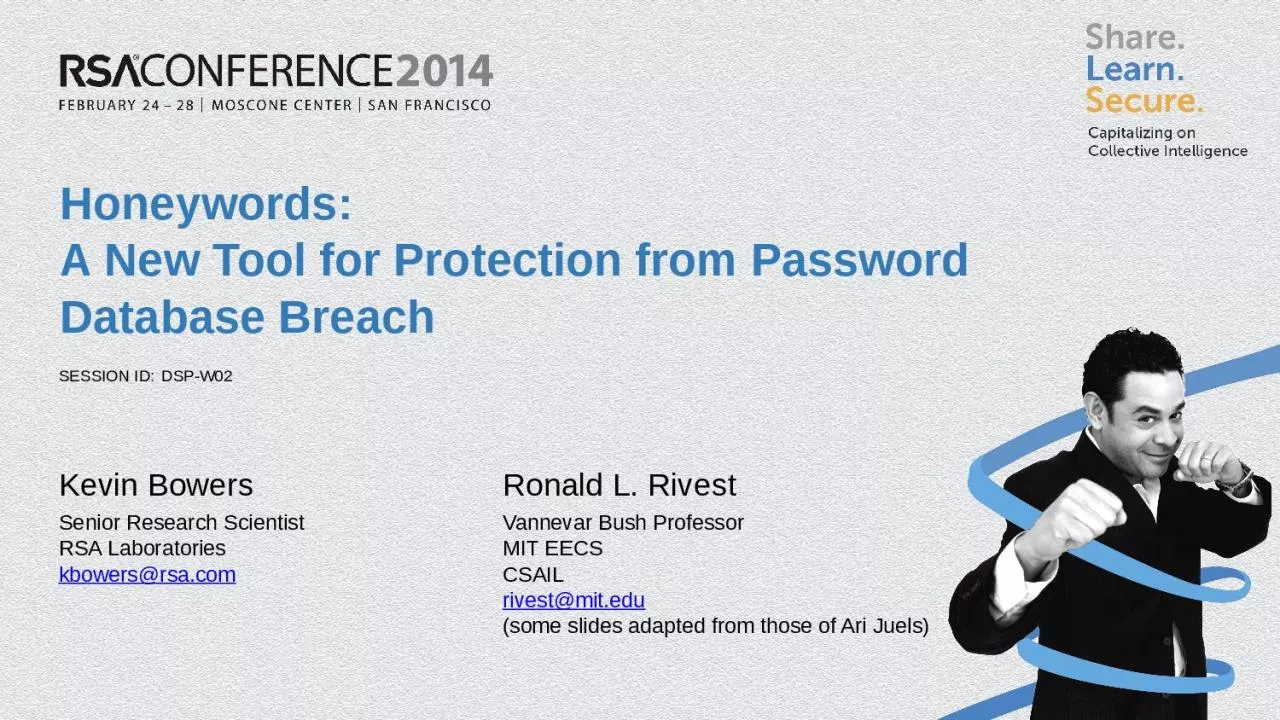PPT-Honeywords: A New Tool for Protection from Password Database Breach
Author : SmoochieBoochie | Published Date : 2022-08-03
DSPW02 Kevin Bowers Senior Research Scientist RSA Laboratories kbowersrsacom Ronald L Rivest Vannevar Bush Professor MIT EECS CSAIL rivestmitedu some slides adapted
Presentation Embed Code
Download Presentation
Download Presentation The PPT/PDF document "Honeywords: A New Tool for Protection f..." is the property of its rightful owner. Permission is granted to download and print the materials on this website for personal, non-commercial use only, and to display it on your personal computer provided you do not modify the materials and that you retain all copyright notices contained in the materials. By downloading content from our website, you accept the terms of this agreement.
Honeywords: A New Tool for Protection from Password Database Breach: Transcript
Download Rules Of Document
"Honeywords: A New Tool for Protection from Password Database Breach"The content belongs to its owner. You may download and print it for personal use, without modification, and keep all copyright notices. By downloading, you agree to these terms.
Related Documents








![[PDF]-Password Book: Small password book, Password book with alphabetical tabs, Password](https://thumbs.docslides.com/984298/pdf-password-book-small-password-book-password-book-with-alphabetical-tabs-password-journal-password-keeper-password-notebook-password-book-5x8-order-a-z-tabs-password-notebook.jpg)

![[PDF]-WTF Is My Password: Password Book with Alphabetical Tabs. Internet Address and Password](https://thumbs.docslides.com/986427/pdf-wtf-is-my-password-password-book-with-alphabetical-tabs-internet-address-and-password-logbook-with-tabs-your-personal-password-notebook-with-110-pages-6-x-9-password-keeper-password-books.jpg)
![[PDF]-Password Organizer: Password Book With Tabs and Alphabetical Password Journal -](https://thumbs.docslides.com/987209/pdf-password-organizer-password-book-with-tabs-and-alphabetical-password-journal-5-x8-over-100-pages-password-log-password-organizer-password-keeper.jpg)
![[FREE]-TOP SECRET PASSWORD BOOK: This Password Keeper is a perfect password log book for](https://thumbs.docslides.com/990623/free-top-secret-password-book-this-password-keeper-is-a-perfect-password-log-book-for-seniors-or-password-diary-for-girls-boys-alphabetical-password-book-username-password-book.jpg)